17 Rosh Hashanah facts every Jew should know
Published September 19, 2022
1. Heads Up!
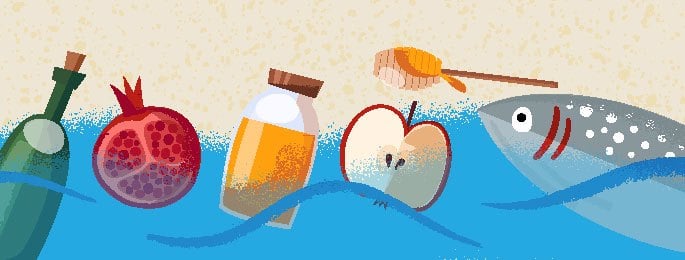
Surprise! Rosh Hashanah does not mean “New Year” in Hebrew. It actually means “Head of the Year.” Just like your head (brain) tells your body what to do, how you behave on Rosh Hashanah has far-reaching consequences for the entire year. Read more here.
2. Toot, Toot!
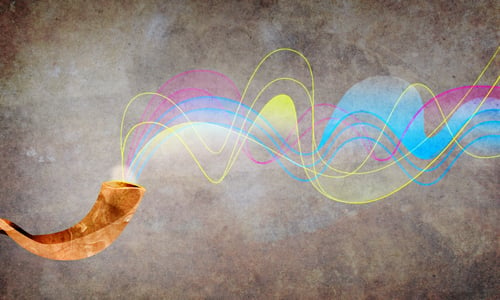
The central observance of Rosh Hashanah is listening to the blowing of the shofar on both mornings of Rosh Hashanah. Made from a hollowed-out ram’s horn, the shofar produces three “voices”: tekiah (a long blast), shevarim (a series of three short blasts) and teruah (a staccato burst of at least nine blasts). The shofar is blown at various intervals during the Rosh Hashanah morning service. Add them all up and you get 100 “voices” in total. Read about why we blow 100 blasts here.
3. Silent Shabbat

When Rosh Hashanah coincides with Shabbat, we do not blow the shofar on that day. The sages enacted this as a precaution, in case someone would end up carrying a shofar to an expert to blow. There is a deeper lesson here as well. On Shabbat, the coronation of the King is so deep and so special that it’s accomplished without the bells and whistles of the shofar. Read more here.
ADVERTISEMENT
4. House Calls
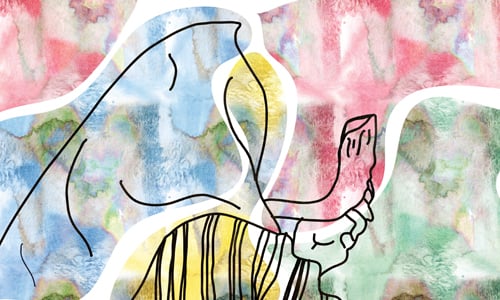
Chabad rabbis all over the world walk many miles on Rosh Hashanah (when car travel is forbidden) to blow shofar for people who are unable to make it to synagogue. If you know someone who cannot make it to synagogue, let your closest Chabad rabbi know as soon as possible. Find a Chabad rabbi here.
5. Twice as Nice
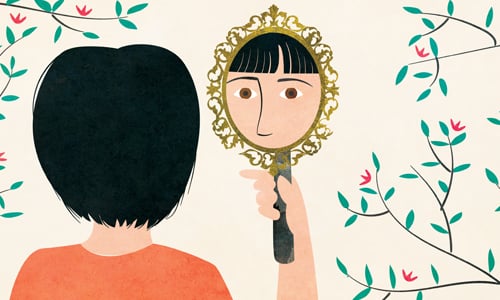
Rosh Hashanah is celebrated for two days. In fact, while most holidays get an extra day in the Diaspora, Rosh Hashanah is the only one that is celebrated for two days in Israel as well. Read: Why Rosh Hashanah is Two Days.
6. But Not Thrice
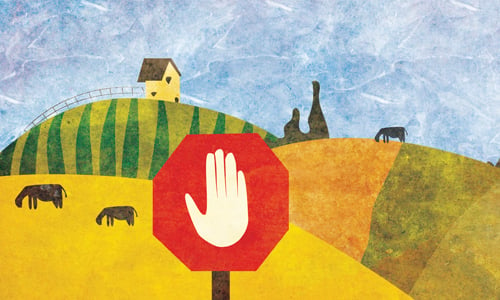
The Jewish calendar follows a particular rhythm. The first morning of Rosh Hashanah can be Monday, Tuesday, Thursday or Shabbat—never Sunday, Wednesday or Friday. See the Rosh Hashanah Calendar.
7. Fireworks in Your Dining Room
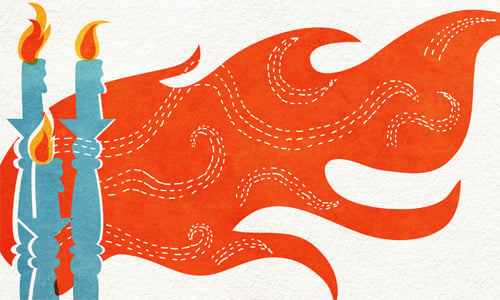
ADVERTISEMENT
That’s right. Like Shabbat and other Jewish holidays, the Rosh Hashanah meals should be eaten in the joyous glow of candles, lit by the woman (or women and girls) of the house. Remember: On the first night, it is ideal to light before the onset of the holiday. On the second night, light only after nightfall, taking care to use a preexisting flame and not blow out your match when done. (Even though we may light fires and cook on holidays, kindling a new fire or extinguishing flames are forbidden.) Read how to light here and see when to light here.
8. Round Rolls
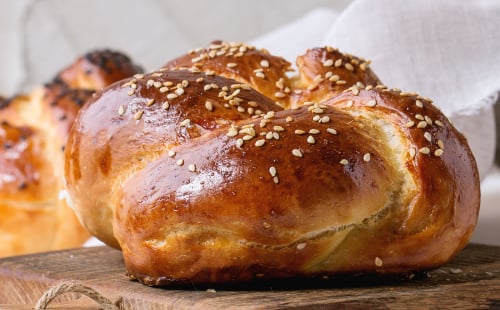
On Rosh Hashanah we traditionally start our holiday feasts with two loaves of round challah, sweetened with raisins to demonstrate our wish for a sweet new year. To add sweetness to our already sweet wish, we dip the challah in honey before taking the first bite. Read: Why Rosh Hashanah Challah Is Round, Not Braided.
9. Apple Dipped in Honey

The meal then proceeds, including a number of sweet delicacies and other foods that express our prayerful wishes for the year. The most common symbolic food is apple slices dipped in honey (or sugar in some communities). Another favorite is tzimmes, a traditional Eastern European dish that includes carrots. Read about why we eat an apple dipped in honey on Rosh Hashanah.
10. Head for the Head
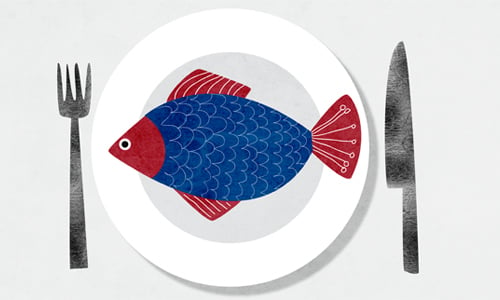
It is customary to sample a morsel from the head of a fish on Rosh Hashanah, symbolizing our wish to be “a head and not a tail.” Some people prefer the head of a ram, which is appropriate since it evokes the time when Abraham almost followed G‑d’s command to sacrifice his son Isaac, until G‑d stopped him at the last moment and had him sacrifice a ram instead. Phew! Read about why eat from the head of a fish here.
11. Seed Count!
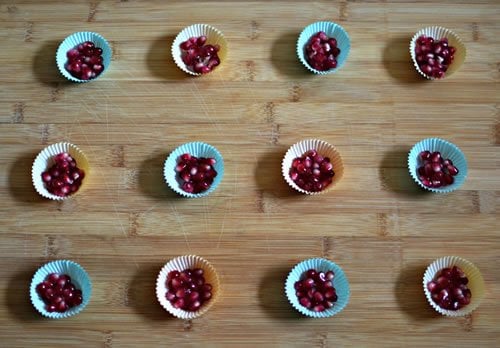
Many people eat pomegranates on Rosh Hashanah, demonstrating their wish for as many merits as the pomegranate has seeds. It is commonly said that the pomegranate has 613 seeds, corresponding to the 613 mitzvahs in the Torah. However, this has yet to be empirically demonstrated by seed counters worldwide. Listen to this class for more on this custom and check out our first-class collection of Rosh Hashanah recipes.
12. Meet and Greet

The traditional Rosh Hashanah greeting is “shanah tovah” (שנה טובה), which means “good year.” The word u’metuka (ומתוקה), “and sweet,” is sometimes added. More Rosh Hashanah greetings.
13. A Day to Pray

The Rosh Hashanah morning services are particularly long, mostly due to the extra liturgy inserted into the cantor’s repetition of the Amidah (the standing prayer). Much of it is poetic in style, and arranged according to the Hebrew alphabet—a boon for people wishing to learn the prayers by heart. Read up on the Rosh Hashanah prayers here and find a friendly Rosh Hashanah service near you here.
14. Birth and (Near) Death

On both days of Rosh Hashanah we read about the life of Isaac. On the first day we read about G‑d granting Sarah’s wish and blessing her with a son, Isaac. On the second day we read how Abraham almost sacrificed him on an altar. Explore the Rosh Hashanah Torah readings here.
15. Castaway Sins

On the first afternoon of Rosh Hashanah (provided it is not Shabbat), it is customary to walk to a body of fresh water and recite a special prayer, symbolically casting our sins into the waters. The waterside ceremony (called tashlich) is evocative of the coronation ceremonies of old, where the rushing waters symbolized good wishes for a long reign—appropriate on Rosh Hashanah, when G‑d is coronated King of the Universe. Read: What is Tashlich?
16. Don’t Blink
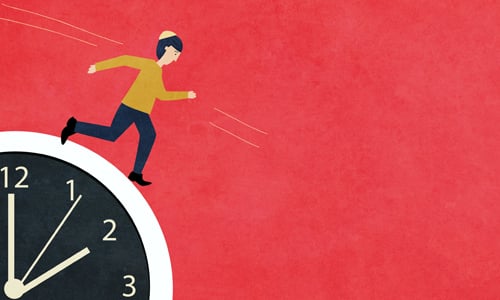
That’s right. Even though napping on Shabbat is considered a virtuous way to celebrate the day of rest, on Rosh Hashanah we make a point of not napping (and some people even stay awake at night), not wasting a precious moment on something as trivial as shut eye. The Talmud states that if one sleeps at the beginning of the year—i.e., on Rosh Hashanah—his good fortune also sleeps.
17. Like Sheep
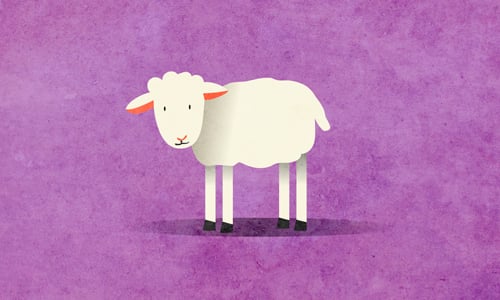
On Rosh Hashanah every single creature passes before G‑d in judgment. Yet it is not a sad day, but one of quiet confidence and optimism. After all, if G‑d created us and continues to sustain us, He obviously believes we have something to accomplish on His earth. And if He believes in us, so should we.
Wishing you a shanah tovah, a good and sweet year!
Your friends at Chabad.org














